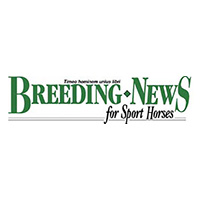By C.R. Crew, M.L. Brennan, J.L. Ireland
Biosecurity measures are designed to prevent the introduction and spread of pathogens, and play a vital role in the equine industry, controlling endemic diseases and reducing the threat of exotic disease incursion. Equestrian premises differ with respect to disease risks, biosecurity requirements and available facilities.
This narrative review summarises reported frequency of implementation for selected biosecurity measures, as well as evidence relating to potential barriers to implementation of biosecurity on equestrian premises. Possible opportunities for improvement in the adoption of equine biosecurity measures are also discussed.
Introduction
Biosecurity encompasses a range of hygiene and management measures, designed to reduce the introduction of infectious agents and to control their spread within populations or facilities (Morley, 2002). Biosecurity principles revolve around the assessment of risk and potential consequences of pathogen exposure or transmission (Wenzel and Nusbaum, 2007). The majority of biosecurity measures are directed towards non-specific disease threats rather than focused towards a particular pathogen and biosecurity is considered good everyday practice to avoid significant impacts when disease incursions occur.
Equine infectious diseases, including globally endemic diseases caused by pathogens such as Streptococcus equi subspecies equi (S. equi; strangles), equine influenza (EI) and equine herpes virus (EHV), represent a major welfare concern and result in considerable financial losses, both for owners and the wider industry (Smyth et al., 2011). In the 2007 Australian EI outbreak, the average cost of veterinary treatment was calculated at AU$9691 per horse, and total household and business losses were estimated at A$100.3 million (Smyth et al., 2011). Furthermore, equine infectious disease can have considerable psychological impact on horse owners and other members of the equine industry (Taylor et al., 2008).
Biosecurity is critical to controlling endemic infectious disease and mitigating the threat of incursion of exotic equine infectious diseases. However, there are a number of challenges associated with implementing effective biosecurity on equestrian premises. Available facilities and use of biosecurity measures are both inconsistent between different premises and are frequently deficient (Rogers and Cogger, 2010, Rosanowski et al., 2012, USDA, 2018, Crew, 2021). Lack of biosecurity was ranked as the highest priority welfare issue affecting the United Kingdom (UK) equine population by a panel of animal welfare experts (Rioja-Lang et al., 2020). In order to identify areas for improvement, and to inform effective strategies for improving equine biosecurity, an understanding of current biosecurity implementation and the factors that influence it is required.
This narrative review details the frequency with which common biosecurity measures are implemented on equestrian premises, alongside factors related to uptake of these measures and potential barriers. Drawing on infection control research in livestock farming and human health care, areas offering potential opportunities to improve equine biosecurity are identified.
Biosecurity measures
Biosecurity recommendations for equestrian premises encompass bioexclusion and biocontainment (Johnson and Duggan, 2012; Ivens, 2015). Bioexclusion comprises risk reduction strategies aimed at preventing pathogen entry, and the introduction of infectious disease, to premises. Examples of bioexclusion measures implemented on equestrian premises include; quarantine of new arrivals or returning resident equids, infection control precautions for visitors and avoidance of contact with other animals (USDA, 2016).
Biocontainment measures focus on limiting pathogen transmission within the resident population, and preventing onward spread from an infected population; for example, isolation of equids suspected or confirmed as having a contagious disease (USDA, 2016). Many biosecurity measures contribute to both bioexclusion and biocontainment, such as maintenance of good hygiene (i.e. hand hygiene, use of personal protective equipment [PPE], disinfection of equipment or vehicles), and vaccination against specific patho-gens (USDA, 2016). The following sections summarise published data on the prevalence/implementation of commonly recommended bioexclusion and biocontainment measures.
Protocols for newly arriving horses
Newly introduced equids pose a risk for introduction of infectious disease, and bioexclusion measures implemented for new arrivals are intended to reduce this risk. Recommendations for newly arriving horses include inspection for signs of clinical disease prior to entering the premises, quarantine on arrival, daily temperature checks during quarantine and ensuring up-to-date equine influenza vaccination (Johnson and Duggan, 2012; Ivens, 2015).
The most recent National Animal Health Monitoring System (NAHMS) study obtained survey data from 1920 American properties with at least five resident equids (USDA, 2016). For premises that had received new resident equids in the preceding year, the most frequently reported health requirements for these animals were testing for equine infectious anaemia (EIA; 56%), anthelmintic treatment (50%) and vaccination (49%) in the last year (USDA, 2016).
The high proportion of premises requiring EIA testing likely reflects compliance with American regulatory requirements for interstate movement of horses, attendance at competitions or other events, and change of ownership. In a cross-sectional study of British non-racing equestrian premises, 77% of premises owners/managers (n = 296/387) reported having a protocol for new arrivals, with passport check and anthelmintic treatment most commonly undertaken (both 57%; Hodgkinson et al., 2018b)... To read the complete article you need to be a subscriber
CLICK HERE TO SUBSCRIBE TO BREEDING NEWS
SUBSCRIBERS CAN READ THE COMPLETE ARTICLE BY LOGGING IN AND RETURNING TO THIS PAGE




